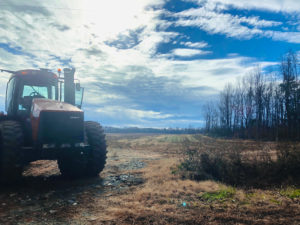Dr. Timon McPhearson is a Director and Associate Professor of Urban Ecology at the Urban Systems Lab at The New School. He works closely with the NYC Mayor’s Office of Resiliency, the NYC Department of Environmental Protection and other city agencies to advance climate resiliency in NYC. This work has included as part of the NYC Mayor’s Task Force on the Urban Heat Island and led to the NYC Cool Neighborhoods Program, a $100 million policy and planning initiative to reduce the risks from heat and heat waves in NYC. He also co-lead the NYC Stormwater Resiliency project which is a $2 million research project to understand the combined challenge of extreme precipitation and storm surge on flooding in the city and produce recommendations for where the city should invest to reduce risks from multiple sources of urban flooding for people and infrastructure. In addition, he has also worked to advocate for green roofs as a nature-based solution for climate resiliency and which in part led to new legislation passed in summer 2019 to require green and/or solar roofs on all new construction in NYC. Now he works closely with city agencies to develop the science to prioritize where investments in green roofs should go and how to develop the regulations associated with this new legislation.
He is deeply concerned about the ways in which climate change is accelerating and creating inequalities in who experience the impacts of climate change. Though he believes everyone has to absolutely invest and change behavior to limit CO2 emissions and mitigate the causes of climate change, much of the climate change for the next 100 years is already built into the climate system and so advancing adaptation and resilience is key to prepare for the drastically different future that we are already starting to witness.
Experiencing Hurricane Sandy in 2012 was a wake-up call for both sounding the urgency on need for climate resiliency in policy, planning, and design, but also at all scales from communities, to cities, to regions. It also deepened Dr. McPhearson’s resolve to focus on climate change adaptation and resilience in his work because this work can save lives, and if everyone does it right, it can help transform our cities, nations, and planet toward a more sustainable relationship between people and nature. Additionally, though we can’t reverse the inequities and injustices of the past, we can focus on resilience efforts and investments for those who need it most, which are historically disenfranchised, low income, and minority neighborhoods. These are also the places likely to experience the worst impacts of climate change. So he believes we need to get to work!
He experienced Hurricane Sandy but have also closely followed similar events since Hurricane Katrina include climate related droughts, fires, hurricanes, and heat waves. These kind of so called “natural disasters” are ultimately very human caused as well and they are increasing in frequency, intensity and impact all over the planet.
Students have so many ways to get involved. No one can solve the climate challenge alone, but we can do it together. And that means putting your skills and passion to work wherever you can. This can mean working with local community organizations to advance sustainability goals from recycling programs, to education, to helping communities learn to switch to renewable energy sources. Student can engage in research, community organizing, or learn how they can reduce their own consumption patterns and educate others to do the same. Students can lead the way partly because they are in an education system where they have access to the latest information about how to create positive impacts in the world. But they can also spread this knowledge, action, and experience to their friends, family, and neighbors.
The public needs to do the same but we also have to help them, listen to them, and understand where there is hesitancy, or lack of knowledge, or other concerns and find ways to be in conversation so we can keep the doors open to bring more people on the sustainability path.






 Angela Myers is a junior at Elon University majoring in PWR with minors in Spanish, Latin American Studies, and History. Angela works in Elon’s Writing Center, is an Honors Fellow, and volunteers with the Village Project. When not in classes, she can be found writing in coffee shops, rereading Pride and Prejudice, or planning her next travel adventure.
Angela Myers is a junior at Elon University majoring in PWR with minors in Spanish, Latin American Studies, and History. Angela works in Elon’s Writing Center, is an Honors Fellow, and volunteers with the Village Project. When not in classes, she can be found writing in coffee shops, rereading Pride and Prejudice, or planning her next travel adventure. Hayden McConnell is a senior Professional Writing and Rhetoric major with minors in Digital Art and Multimedia Authoring. Professionally, she works in the Digital Art Studio on campus. Her plans for after graduation in May of 2020 are to begin her career in the marketing field where she can utilize her writing skills as well as her love for design.
Hayden McConnell is a senior Professional Writing and Rhetoric major with minors in Digital Art and Multimedia Authoring. Professionally, she works in the Digital Art Studio on campus. Her plans for after graduation in May of 2020 are to begin her career in the marketing field where she can utilize her writing skills as well as her love for design.  Leah Graf is a senior at Elon University majoring in Strategic Communications with minors in Professional Selling and Professional Writing Studies. At Elon, Leah has been involved in Live Oak Communications, a student-run strategic agency that creates integrated communications plans for local clients. Her professional experiences include internships at the American Cancer Society, NBC News Public Relations and NBC Entertainment Publicity. Following her May 2020 graduation, Leah plans to pursue a career in corporate communications that utilizes her marketing and writing skills.
Leah Graf is a senior at Elon University majoring in Strategic Communications with minors in Professional Selling and Professional Writing Studies. At Elon, Leah has been involved in Live Oak Communications, a student-run strategic agency that creates integrated communications plans for local clients. Her professional experiences include internships at the American Cancer Society, NBC News Public Relations and NBC Entertainment Publicity. Following her May 2020 graduation, Leah plans to pursue a career in corporate communications that utilizes her marketing and writing skills.